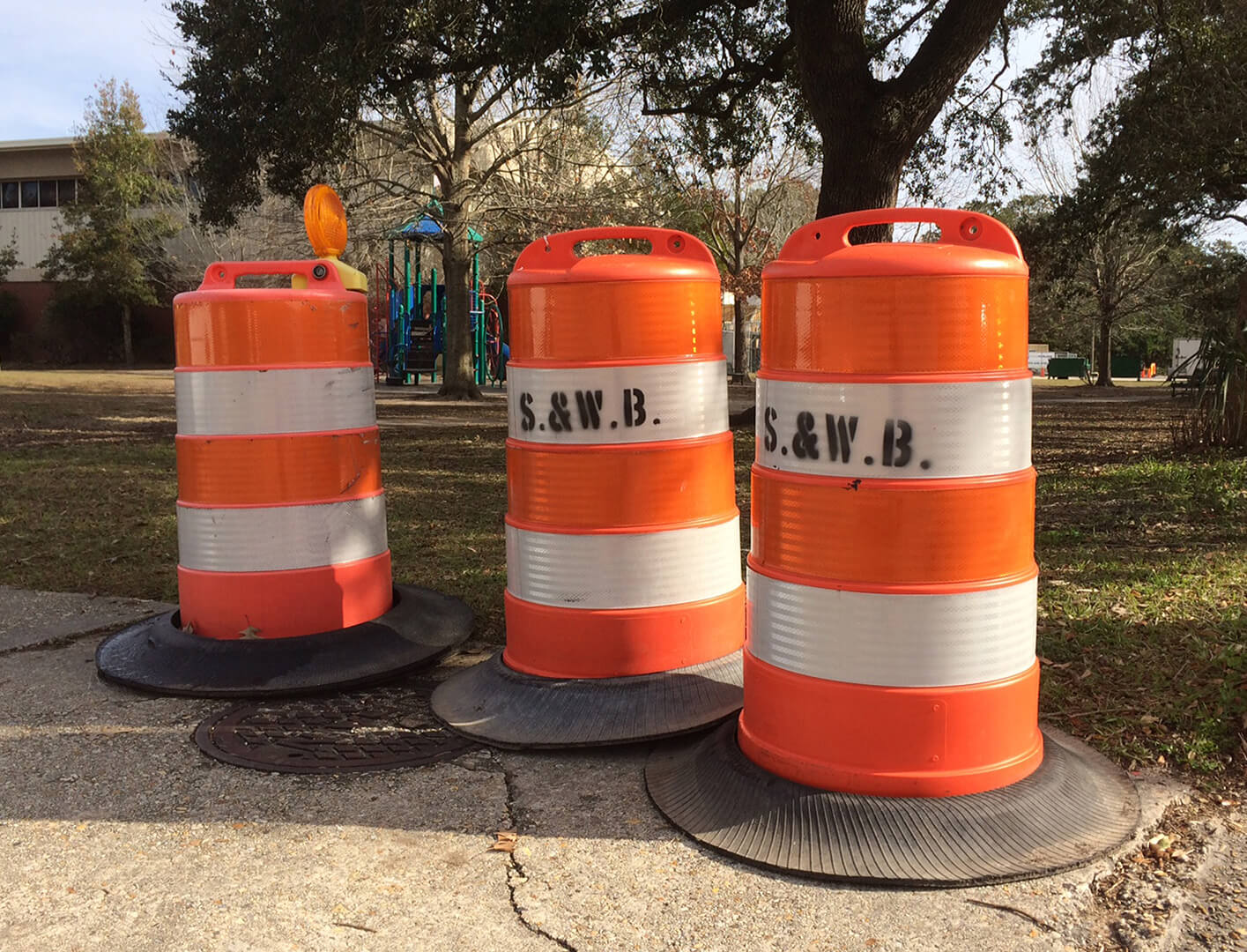
Eiffel Tower, Panama Canal… S&WB? New Orleans’ drainage system joins cadre of engineering marvels
By Jerry DiColo
Source: The Times-Picayune | NOLA.com
May 23, 2023
There are wonders of the ancient world. There are wonders of the modern world. There are UNESCO World Heritage Sites.
There are also Civil Engineering Historic Landmarks, a designation given by the American Society of Civil Engineers to recognize “historically significant local, national and international civil engineering projects, structures, and sites.”
Honorees include the Eiffel Tower, the Panama Canal, the Hagia Sofia, and as of this week, the New Orleans Sewerage & Water Board’s drainage system.
City officials held a dedication ceremony on Tuesday at Drainage Pump Station 6, which sits astride the 17th Street Canal near Metairie Road.
A. Baldwin Wood’s pumps
The designation — which unlike other landmark designations doesn’t put any restrictions or legal obligations on the honoree — might strike a false note for New Orleanians who’ve spent stormy afternoons watching water creep onto their porches due to pump outages, or shared pictures of a Mazda 626 being pulled out of an underground culvert.
Currently, the agency is in the middle of a fight with the City Council over its inability to quickly address billing problems. And the Bureau of Governmental Research said in a major report last week that the utility needs a massive overhaul in how it is governed.
But the drainage system’s historic impact on the city is hard to argue with.
Designed around the turn of the 20th Century, the system, which was built using the innovative screw pumps of engineer Albert Baldwin Wood, “drastically improved the city’s drainage crisis, decreased disease rates, increased the quality of the water supply, and drove economic growth throughout New Orleans,” according to researchers at the Historic New Orleans Collection.
The pumps, many of which are still in use today, were an early part of a drainage system that, according to the S&WB, has grown to 1,500 miles of underground drainage pipes, 200 miles of canal (open and underground) and 120 pumps.
Of course, as HNOC researchers noted, the draining of the city came with “a mighty cost.”
In pulling water out of the alluvial soils of New Orleans, the system accelerated the subsidence that has left roughly 50% of the city below sea level, according to geographer Richard Campanella.
‘Brilliance and tenacity’
In public statements Tuesday, Mayor LaToya Cantrell, S&WB Executive Director Ghassan Korban and City Council member Freddie King, who serves on the S&WB board, focused on the engineering.
“I would like to thank ASCE for recognizing such a critical engineering accomplishment,” said Korban. “We are proud to continue the legacy of the bold, creative civil engineers who came before us.”
Said Cantrell of the engineers who designed the system: “Their brilliance and tenacity allowed New Orleanians to build a city with unparalleled access to major inland hubs due to the natural advantages of being a port city.”
In addition to hundreds of modern marvels around the world, the S&WB’s drainage system joins several other Civil Engineering Historic Landmarks in Louisiana, according to the ASCE’s website.
They include the Bonnet Carré Spillway, the Lake Pontchartrain Causeway, The Eads South Pass Navigation Works at the mouth of the Mississippi River, the Huey P. Long Bridge and the McNeill Street Pumping Station in Shreveport.
Fair Use Notice
This site occasionally reprints copyrighted material, the use of which has not always been specifically authorized by the copyright owner. We make such material available in our efforts to advance understanding of issues and to highlight the accomplishments of our affiliates. We believe this constitutes a “fair use” of any such copyrighted material as provided for in section 107 of the US Copyright Law. In accordance with Title 17 U.S.C. Section 107, the material on this site is available without profit. For more information go to: US CODE: Title 17,107. Limitations on exclusive rights: Fair use. If you wish to use copyrighted material from this site for purposes of your own that go beyond “fair use,” you must obtain permission from the copyright owner.
